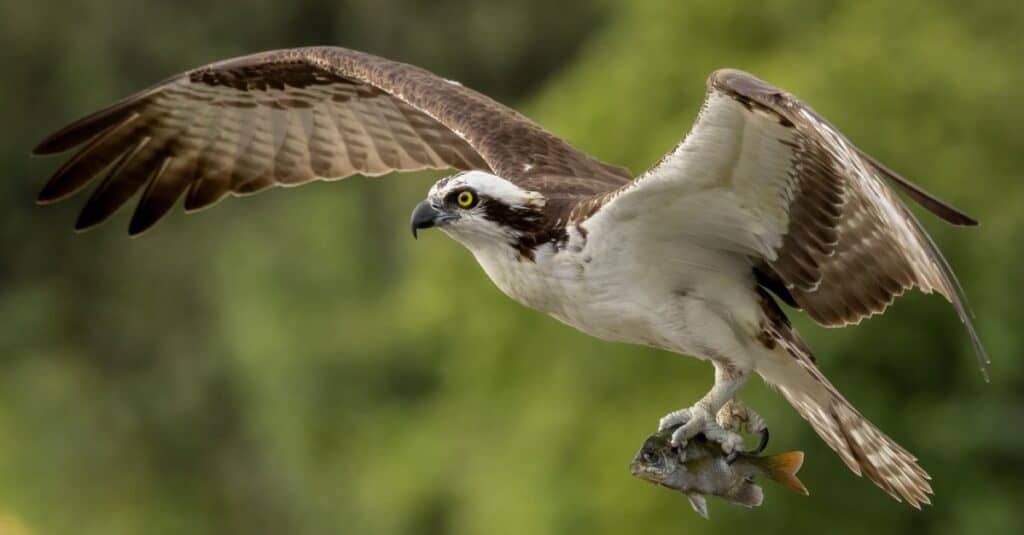The aesthetics of this scene may not be appreciated by the ribbon fish, but it’s hard to deny the beauty of this clip. A stunning osprey moves across the water’s surface with a ribbon of fish writhing and wriggling in its claws. As the video below shows, nature can be both brutal and beautiful at the same time.
Watch the Incredible Footage Below
Where Can You Spot Ospreys?

Ospreys are excellent at fishing!
©Gregory Johnston/Shutterstock.com
Ospreys (Pandion haliaetus) are large raptors that can measure 19 to 26 inches long. They weigh between two and four pounds and have a 50 to 71-inch wingspan.
They are one of the most widespread birds of prey in the world. As well as covering North and South America, they also cross Africa, Europe, Asia, and Australia. Antarctica is the only continent that they cannot be spotted on.
Some (but not all) osprey populations are migratory and travel thousands of miles (it can be over 4,000 miles) from summer breeding grounds in the northern hemisphere to locations further south where they spend the winter. Amazingly, when they return to their breeding grounds, many of them locate the same tree or nesting platform.
As an example, the birds that you see breeding in the northeast of the US fly to tropical South America for the winter. Combine the wide range and a lot of flying, and you get a bird that can be just about anywhere! The best time to spot them is in the early morning and late afternoon. This is when they are out fishing – as we see in this clip.
What Do Ospreys Normally Eat?

A number of birds have evolved specialized traits to help them hunt for fish.
©iStock.com/Harry Collins
The mainstay of the osprey diet is fish, so they are described as piscivorous. The exact species of fish varies with their chosen habitat. Ospreys living in Clarence Valley, in northeastern New South Wales have a diet of mainly sea mullet (Mugil cephalus) and yellowfin bream (Acanthopagrus australis).
However, ospreys also eat small mammals such as rabbits and other birds. They also eat snakes, frogs, salamanders, and crustaceans. Ospreys have been seen eating carrion (dead animal carcasses).
These birds are excellent at spotting fish from above. They then dive under the water feet first or submerge their whole bodies. As we see here, they can carry quite large fish away to be devoured at a more convenient location!
How Big Are Osprey?

©Martha Marks/Shutterstock.com
The osprey is a large bird of prey found throughout the world. At birth, osprey chicks weigh about 3.5 ounces and are roughly 8-10 inches long. As they age, they become larger, reaching a size of about 22-25 inches in length. An adult osprey has a wingspan of around 5-6 feet.
The talons of an osprey are incredibly powerful, growing up to 2.5 inches in length. These talons are used to grasp and carry prey weighing up to 4 pounds. Ospreys are also known for their incredible eyesight, which helps them spot prey from far away.
In addition to their impressive size, ospreys are also very strong and agile in flight. They can flap their wings up to 80 times a minute and can reach speeds of up to 56 miles per hour.
Ospreys are impressive creatures. Their size and strength make them well-adapted to their environment, allowing them to survive and thrive in various habitats.
The photo featured at the top of this post is © LMIMAGES/Shutterstock.com
Thank you for reading! Have some feedback for us? Contact the AZ Animals editorial team.







